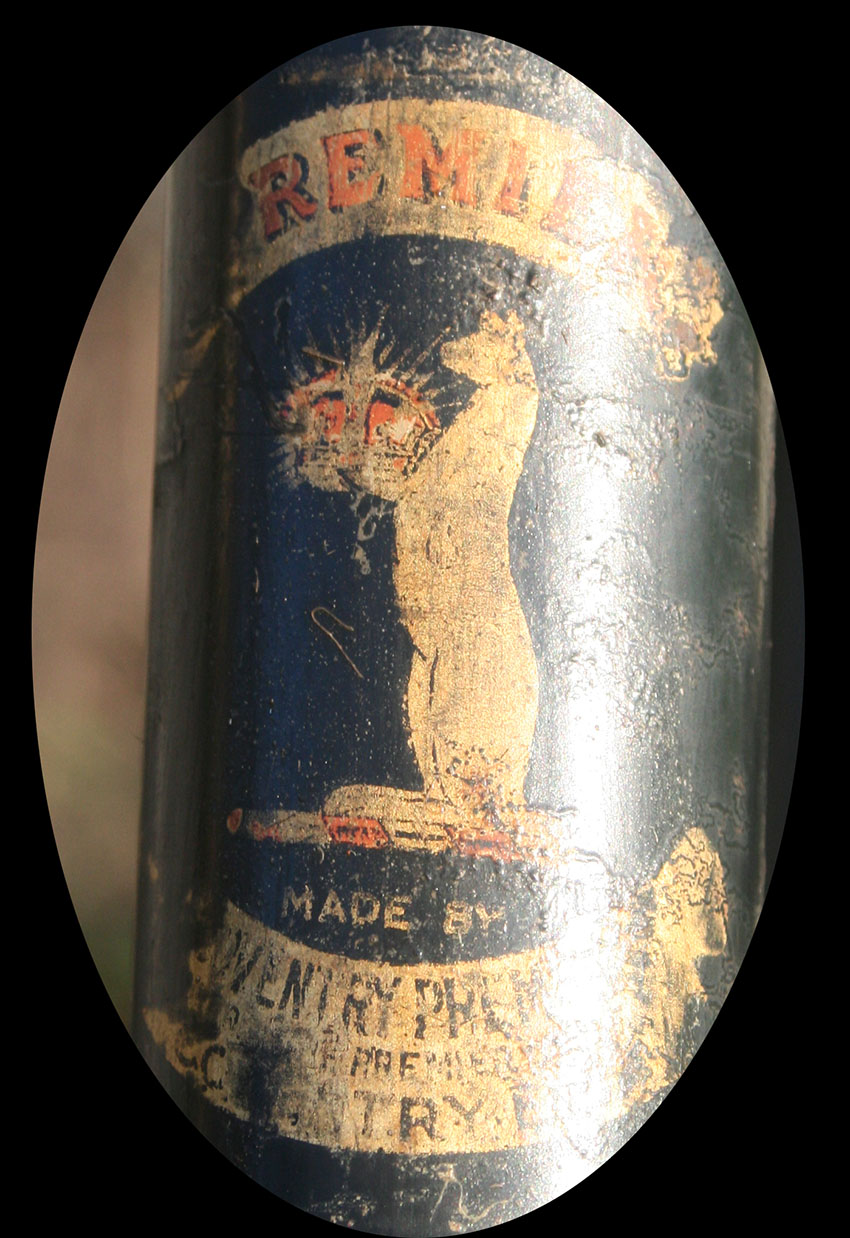
PREMIER HELICAL TUBING


You can clearly see the diagonal design of Premier’s unique helical tubing on this bicycle.

The idea of this frame construction was to make a strong lightweight frame.



1905 Premier No. 7 Helical
26″ Frame
28″ Wheels
Inverted Lever Front Rim Brake
Eadie Coaster Rear Brake
(Now sold)

The history of Premier is an essential part of the history of modern cycling. Hillman, Herbert & Cooper’s Kangaroo ‘ordinary’ made its debut in 1884 and, for two years, this was the world’s leading bicycle design. They set a new standard, patented in 1886, with another design, a ‘cross-frame’ safety bicycle named the Premier. As this new safety bicycle became the world standard, copied by every other company, the Premier name was subsequently adopted for the company. As you can see below, they retained the Kangaroo logo for Premier badges and transfers.

According to their 1907 catalogue, Premier introduced roller lever brakes for the 1906 season. This model was one of the last inverted lever models. The Helical Premier was the company’s top-of-the-range model, and this example retains its original paintwork and transfers (decals). The diagonal pattern of its helical tubing can be clearly seen in its main tubing.



‘Ask your cycling friends what they think of the Premier’


In 1907, Cycling magazine retained the services of a messenger boy, using a Premier fitted with an advertising board.



















1910 PREMIER CATALOGUE

I don’t have a 1905 catalogue, but this 1910 catalogue illustrates the model, with some later variations such as brakes, roller levers and mudguard extension.

The excerpt below illustrates the Premier front brake introduced in 1907.

For a walk round the Premier factory PLEASE CLICK HERE















PREMIER MILITARY MACHINES

With the company’s endorsement by the Royal Family, it was natural that Premier would make military models. In 1888, still the early days of military cycling, the above machine was offered as an option.

Like many other companies at the time, Premier made an ‘official’ military roadster in 1915, which it designated the No. 11 Service Model. Front and rear carriers were fitted as standard, as was a triangular toolbag with tools. It’s interesting that it was also fitted with a spring-up rear stand, as used on the Premier No 8. Carrier Model (below). Manufacturers generally used Tradesman’s bicycles as the pattern for their military machines.


The chain wheel of the bicycle shown in this picture reveals it to be a Premier. This photo of the 25th City of London Regiment was taken in 1911, at Rye Camp.
























































